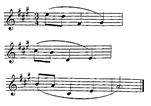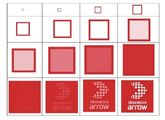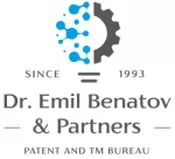The registration of a trademark is one of the most important steps in the development of a brand. A registered trademark gives its owner the right to be the exclusive user of a given sign in relation to the goods and services for which it has been registered. The trademark owner's monopoly over the brand, provides an advantage over the competition, as well as a powerful tool to counteract imitators and infringers.
If a business needs trademark protection in Bulgaria, this can generally be achieved via registering a Bulgarian trademark, or via registering an European Union trademark (as EU trademarks are also valid in Bulgaria.
Below, we will explore what types of signs can be registered as a trademark in Bulgaria and the EU.
1. Word marks
Word marks are the most widespread type of trademark and are well-known to the general public. They are trademarks, which only consist of text elements. The word mark's owner has the exclusive right over the registered text, regardless of the way it's represented graphically. An example of a word mark would be "SONY".
2. Figurative and combined marks
Figurative marks are also very popular. They are marks which
include a graphic element. They can be exclusively figurative, for
example the adidas "stripes" ![]() , but can also be combined, where the graphic
element is used in combination with text, and/or where the text is
stylised in a particular way
, but can also be combined, where the graphic
element is used in combination with text, and/or where the text is
stylised in a particular way ![]() .
.
3. Three-dimensional shapes
These marks can consist of shapes, packaging, or the product
itself and its exterior. An example of such a mark would be ![]() , registered for perfumes. It has to be noted,
that there are some additional legal requirements for shape marks
and that the Patent Office may refuse registration in some cases.
For example, shapes which are necessary to achieve a technical
result cannot be registered.
, registered for perfumes. It has to be noted,
that there are some additional legal requirements for shape marks
and that the Patent Office may refuse registration in some cases.
For example, shapes which are necessary to achieve a technical
result cannot be registered.
4. Position marks
Position trademarks protect not just a sign, but also the
particular position of the sign on a given product. The use of such
marks is well-established in the sports shoe industry. For example,
in the mark  , the protected
element are the "stripes", shown in black, and the shoe
is depicted with interrupted lines only as a way to indicate how
the trademark is positioned on this type of goods.
, the protected
element are the "stripes", shown in black, and the shoe
is depicted with interrupted lines only as a way to indicate how
the trademark is positioned on this type of goods.
5. Pattern marks
Pattern trademarks consist of a set of elements which are
repeated regularly. Their use is popular in the fashion industry.
For example, this is a pattern mark registered by Burberry  . Not all patterns are capable of being
protected as trademarks. Patterns which are too simple will likely
not be distinctive enough. Similarly, patterns which are too
complex and cannot easily be perceived and remembered by consumers,
might also not have the required distinctiveness that a sign needs
in order to be a trademark.
. Not all patterns are capable of being
protected as trademarks. Patterns which are too simple will likely
not be distinctive enough. Similarly, patterns which are too
complex and cannot easily be perceived and remembered by consumers,
might also not have the required distinctiveness that a sign needs
in order to be a trademark.
6. Colour or combination of colour marks
It is possible to protect a colour or combination of colours as
a trademark. "Owning" a whole colour is a very powerful
level of protection and it is not easily accomplished. Ordinarily,
there should be prior use of the colour in relation to the goods
and services for which registration is sought, before the Patent
Office would grant the registration. An example for a colour mark
is  - the colour of T-Mobile/Deutsche
Telekom.
- the colour of T-Mobile/Deutsche
Telekom.
7. Sound marks
Sound marks can be melodies, depicted in the trademark register
with musical notation – for example  - the Nokia Ringtone. From relatively
recently, digital sound files can also be registered, which allows
a greater variety of sounds to be protected – for example
sound effects, animal sounds and others.
- the Nokia Ringtone. From relatively
recently, digital sound files can also be registered, which allows
a greater variety of sounds to be protected – for example
sound effects, animal sounds and others.
8. Motion marks
Motion trademarks contain movement or a change in the position
of the elements of the trademark. They can be registered as a video
file, which should show the exact motion being protected, or as a
sequence of images demonstrating the motion – for example
 .
.
9. Multimedia marks.
These are marks which include a combination of image (still or in motion) and sound. In order to be registered, an audiovisual file must be submitted to the Patent Office.
10. Hologram marks
Holograms are surfaces which show different images depending on
the angle of viewing. They can be registered as a video file, or as
a sequence of images which shows the holographic effect. For
example, Google has registered the following mark as a hologram:
 .
.
As we've seen, there is a great variety of options available, and there is a lot of room for creativity when protecting your brand as a trademark. Which is the best choice will depend on the individual circumstances and commercial goals of your business. An IP attorney can provide assistance with choosing and executing the right strategy in order to best protect your brands.
The content of this article is intended to provide a general guide to the subject matter. Specialist advice should be sought about your specific circumstances.

